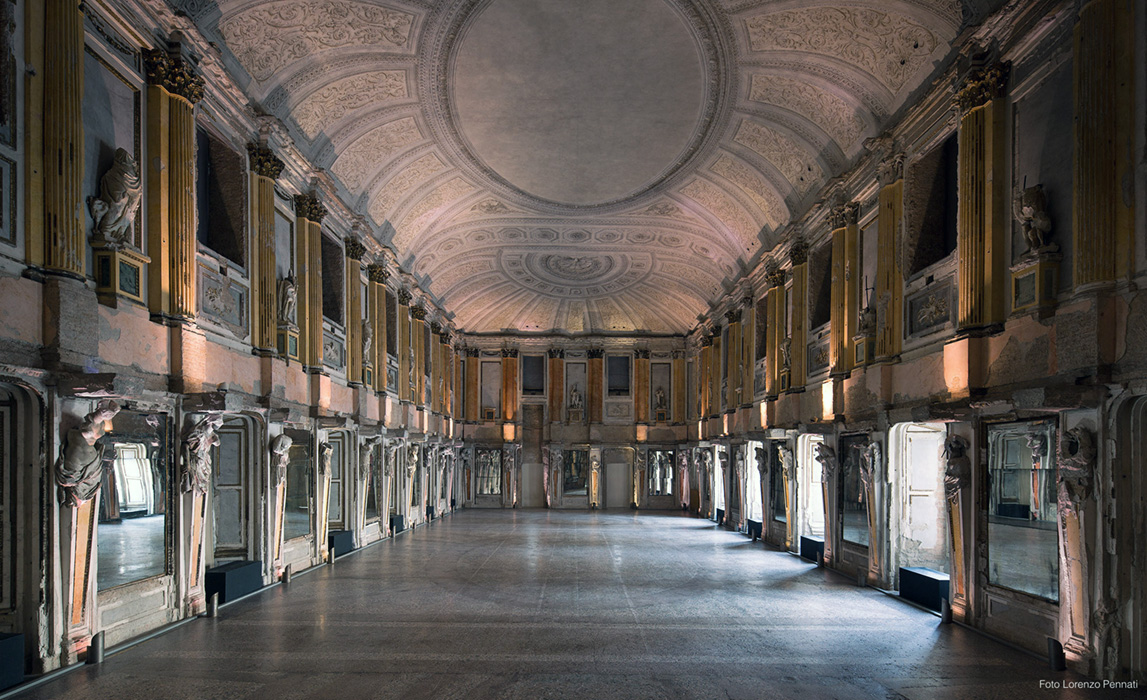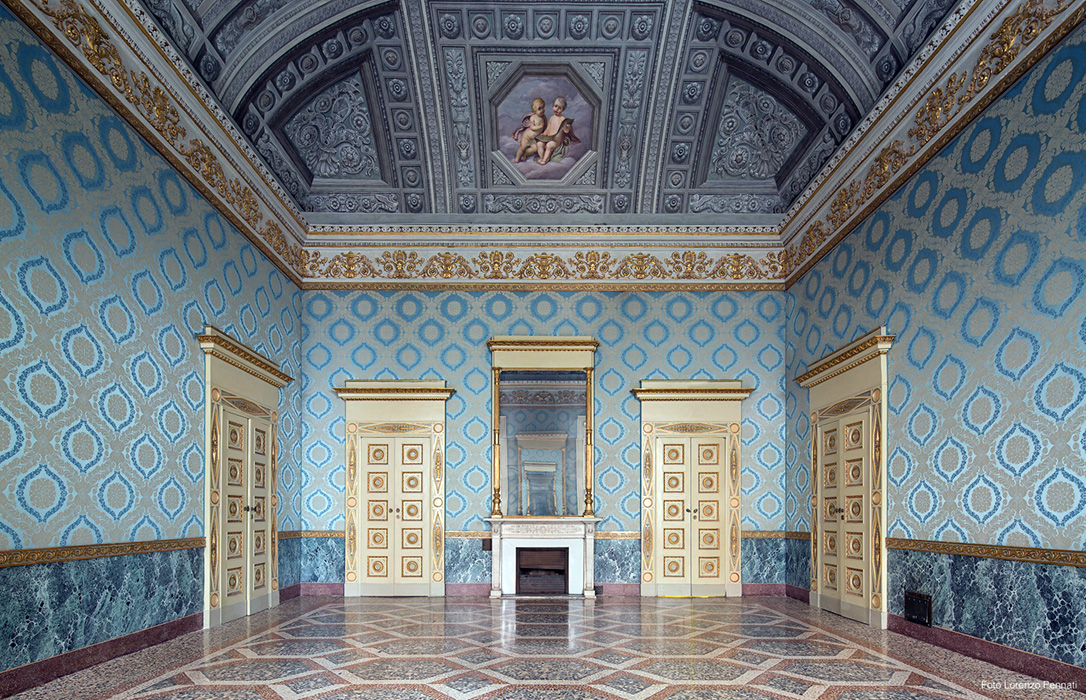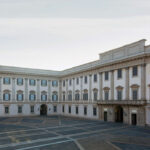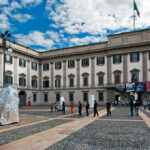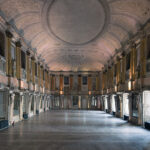Milan – Palazzo Reale
The origins of Palazzo Reale are very ancient, and its history is intertwined with that of Milan and those who governed it. From the Sforza to Napoleon, from the plague to the bombings, there are many characters and events that have influenced the structure and functions of the Palace, a mirror of the powerful forces that have alternated in the government of the city and that have changed its face over the centuries, until it became the most prestigious space for major art exhibitions in Milan that we know today. To follow the history of Palazzo Reale means to read the changes that have involved one of the most important cities in Italy and its inhabitants.
Its first name was Palazzo del Broletto – later defined as “Vecchio” to distinguish it from the Broletto Nuovo, the current Palazzo della Ragione. The term Broletto in the Middle Ages generally indicated a fenced area, but in Milan it became the town hall building, a place dedicated to governing the city where city assemblies were held and justice was administered.
This role was consolidated with the lordships of the Visconti (1395-1447) and then the Sforza (1450-1535), the latter alternating with French domination. Despite their official residence being the Castello Sforzesco, the dukes felt the need for a Palace that represented them officially in Milan, less like a fortress and more oriented towards the magnificence of the Renaissance courts. However, it was the French who, succeeding the Sforza with Louis XII first and Francis I later, moved their Court here in the first decades of the 16th century, officially making it the Ducal Palace.
After the alternating of power between the French and the Sforza, in 1535 Milan comes under Spanish rule, which will last until 1714. The city faces difficult years, being the victim of two plagues, the more serious one described by Alessandro Manzoni in “The Betrothed”.
The new governors settled in the Palace and undertook important renovation and expansion works. The first theater in Milan was built inside (1594), destroyed by a fire in 1659 and rebuilt only in 1717 until its demolition was decided in 1776 for the construction of the famous current Teatro alla Scala.
With the Austrians, who succeeded the Spanish in the government of the city in the second half of the 18th century, the Palace became a place of luxurious court life and was embellished by renovation work. In 1739, Maria Theresa of Austria also stayed here in her visit to the Milanese duchy.
The Austrians are mainly responsible for the restructuring of the exterior of the Palace in the forms that can still be seen today. With the intervention of Piermarini, called to the Court from 1770 to 1778, every architectural testimony of Lombard art disappeared, and the entire Palace took on neoclassical attire. From then on, it was the Palace of the rulers, from Maria Theresa to Napoleon, from Ferdinand I to the Savoy Kings of Italy.
The Regio-Duca Palace, as it was called until 1796, was named the Palazzo Nazionale della Cisalpina with the arrival of the French until, with the arrival of Napoleon Bonaparte, it was quickly called the Regia Corte, Palazzo della Corte Reale or finally Palazzo Reale.
When Milan became the capital of the Kingdom of Italy in 1805 and then the capital of the Kingdom of Lombardy-Venetia, with the return of the Austrians, the Palace reached its maximum splendor thanks to the embellishment work entrusted to Andrea Appiani, Pelagio Pelagi and a young Francesco Hayez.
With the proclamation of the Kingdom of Italy in 1861, Milan lost its status as the capital, and the royal family of the Savoy, although still the owner of the Palace, frequented it rarely and used it mainly during official events, such as the 1906 Universal Exhibition.
The last official visit to the Palace was that of the American President Wilson in 1919, welcomed in Milan by Vittorio Emanuele III.
After the First World War, the Savoys stripped themselves of much of their property and donated the Palazzo Reale to the Municipality which, reserving the reception rooms for the monarchs, proposed to create a museum of decorative arts inside, which was never started.
Severely damaged by the bombings of 1943, the Palace lost much of its treasures: entire rooms on the main floor were irreparably destroyed along with their frescoes, friezes, sculptures, and decorations, while furniture and movable ornaments, transferred to another location during the war, were not relocated. The great Salone delle Cariatidi was blown open, and the caryatids eroded by the subsequent fires, rains, and snowfall.
As early as 1929, the Palace had hosted a commemorative exhibition of the works of Tranquillo Cremona on the fiftieth anniversary of his death. But the real exhibition history of the Palace began in 1951 when Roberto Longhi set up the memorable exhibition on Caravaggio and the Caravaggisti.
It is the beginning of an extraordinary series of exhibitions that will enliven the cultural life of Milan in the 1950s in the desire to rebuild, through culture, the socio-economic fabric and identity of the city, which had been hit hard by the war that had left its wounds and signs of destruction, also in Palazzo Reale.
In 1952, an exhibition dedicated to Van Gogh took place, and in 1953 a exhibition of Pablo Picasso, for which the artist chose to exhibit his Guernica in the Cariatidi Hall, destroyed by the bombings ten years earlier.
Exhibitions followed on the Etruscans, on Modigliani, on the 17th-century Lombard painters. In the 1980s, there was a revival of exhibition activity with numerous exhibitions, among which those on the 1930s, on the “Other Half” of the Avant-garde curated by Lea Vergine, on Munch, on the 18th-century Lombard painters, and on many other themes that were protagonists of world art.
Thanks to the commitment of the Municipality of Milan, the Cariplo Foundation and the collaboration of the Superintendent for Architectural and Landscape Heritage of Milan, the twenty-year recovery and restoration projects have restored to the public the rooms belonging to the neoclassical period and the 12 rooms of the Principes’ Apartment.



